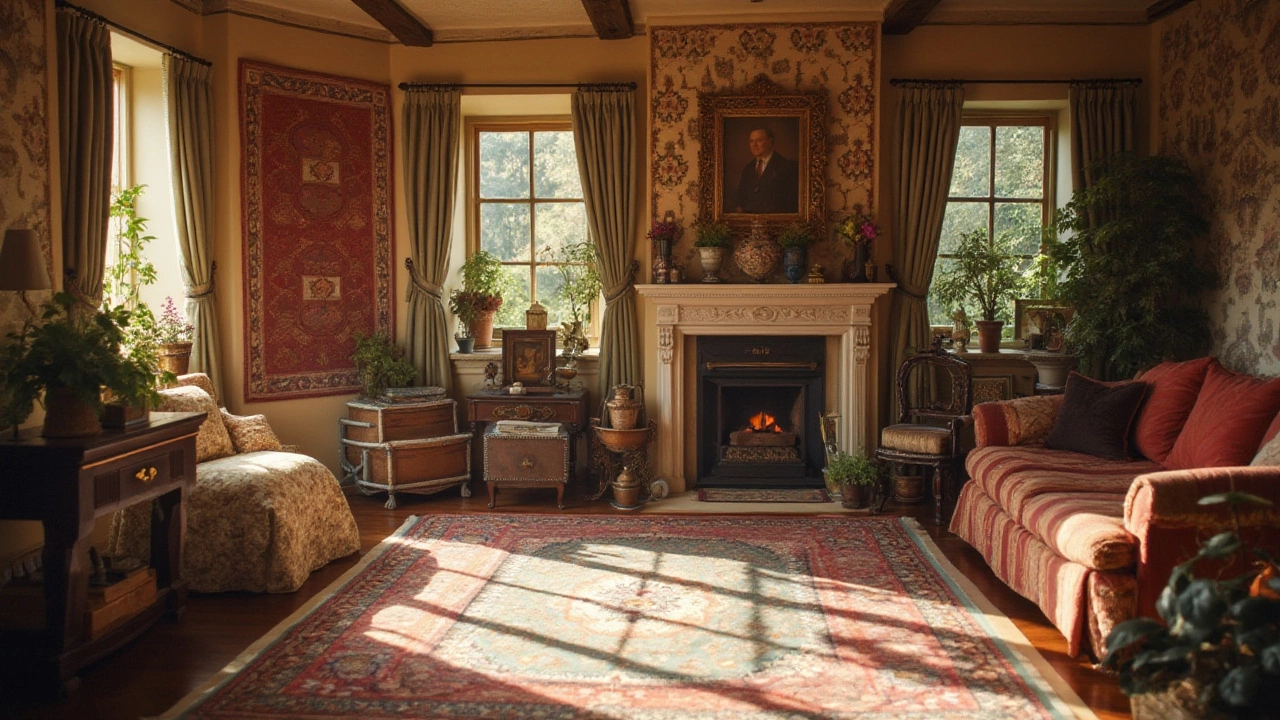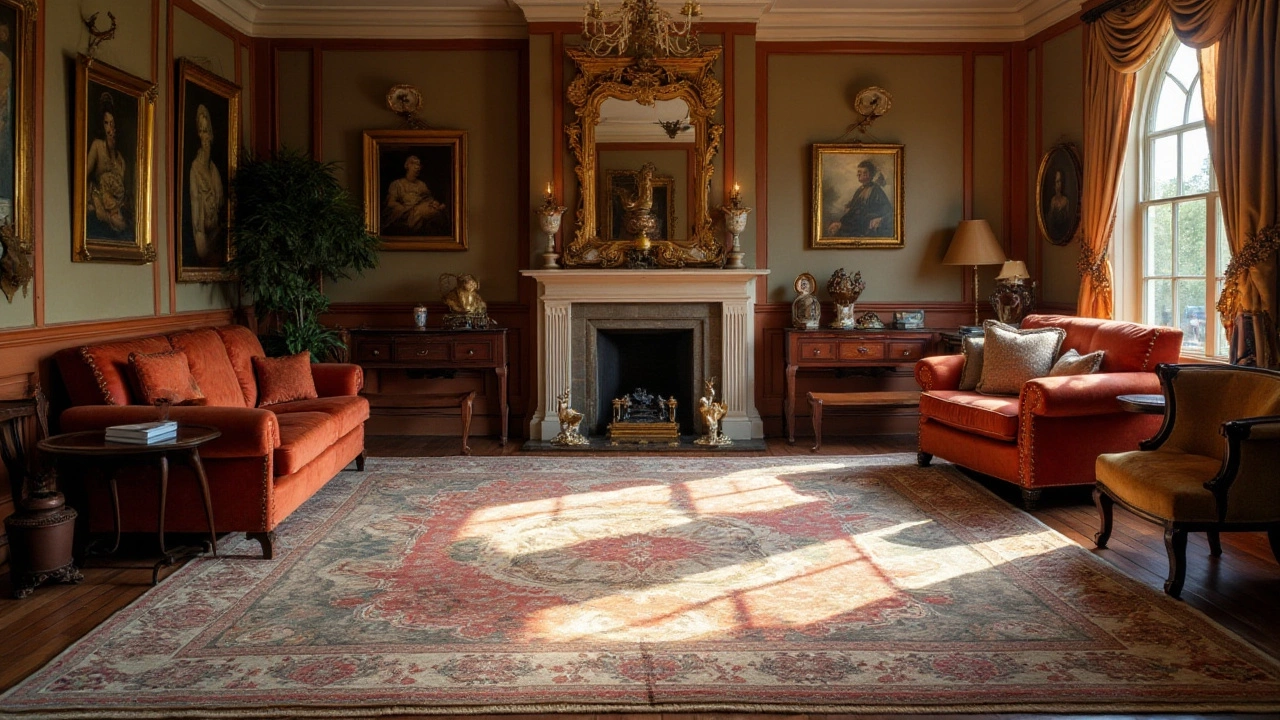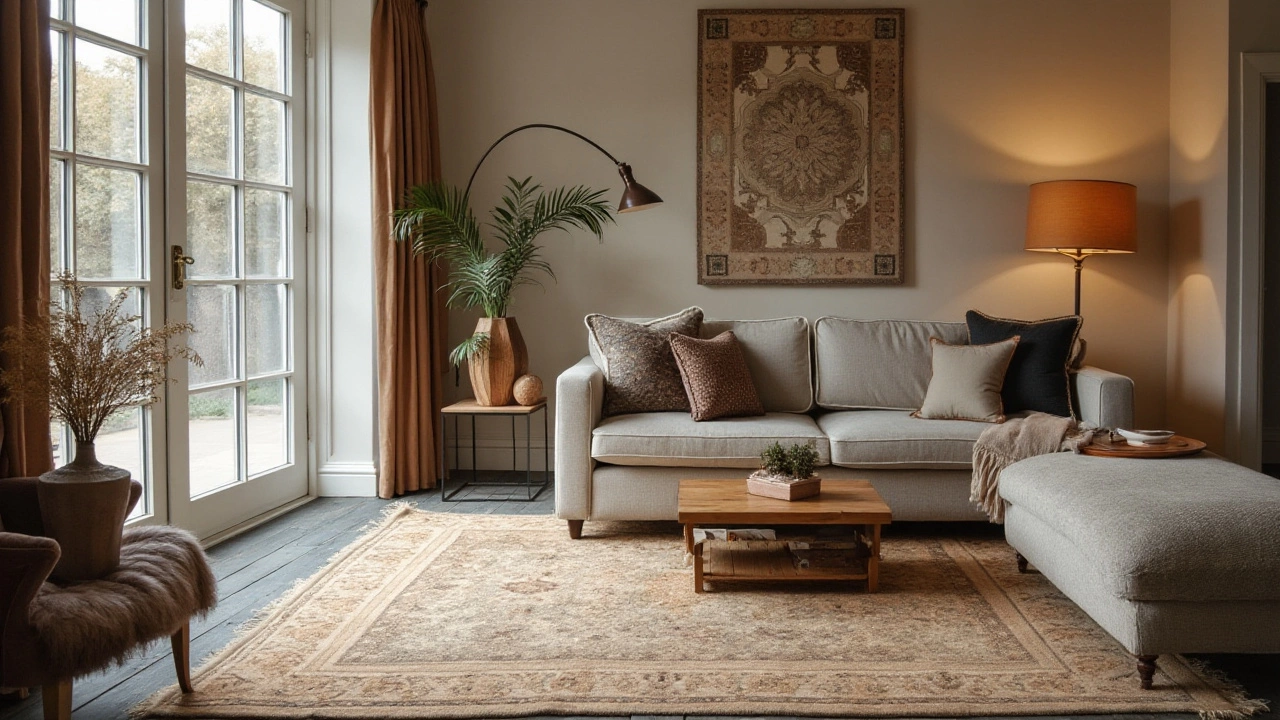Buying a rug is not just about finding a floor covering—it's about choosing a piece that fits your space, style, and budget. In 2025, the range of rug prices is as diverse as ever, influenced by an array of factors including the craftsmanship, materials used, and origin.
Understanding the factors that affect a rug's cost can make your shopping experience more straightforward and enjoyable. In this article, we delve into what you can expect to pay for a quality rug, explore different types, and offer tips so you feel confident when making your purchase. Whether you're drawn to handcrafted designs or prefer machine-made options, make sure to balance quality with your financial plan.
- The Factors Affecting Rug Prices
- Types of Rugs and Their Costs
- Where to Buy Quality Rugs
- Tips for Shopping Smart for Rugs
The Factors Affecting Rug Prices
When it comes to understanding the cost of a rug, numerous aspects come into play, shaping how much consumers might end up paying. Delving into these factors can provide clarity and guidance, making the decision-making process less daunting. The first key aspect is the material used. Quality rugs crafted from pure wool, silk, or a blend of both, naturally command higher prices compared to synthetic options. Wool, especially, is renowned for its resilience and softness, making it a preferred choice for both manufacturers and buyers. The origin of the wool, the dyeing process, and the thickness of the fibers can all sway the final price tag.
Another vital factor is the method of construction. Hand-knotted rugs are considered masterpieces in the rug world, each one a labor of love and months or even years in the making. The meticulous care taken in crafting these rugs is unmatched and reflected in their cost. On the other hand, machine-made rugs, while lacking the artisanal touch, are more consistent in quality and substantially less expensive. To get a better picture, consider a reputable source stating,
“A hand-knotted rug can range anywhere from £500 to tens of thousands, while machine-made rugs usually fall between £50 to £500.”This clearly indicates the vast difference in price dictated by production techniques.
Design complexity is yet another element influencing rug prices. A rug adorned with intricate patterns, vibrant colors, and traditional motifs often fetches a premium. The design intricacy necessitates additional craftsmanship and time, inevitably impacting the overall cost. Meanwhile, simple patterns and solid colors tend to be less demanding on both time and skills, making them more budget-friendly and accessible. Besides design, size plays an essential role too. Larger rugs cover more area, requiring more materials and time to create. This naturally results in higher prices, making them precious for those intent on decorating grand spaces.
Geographical origin also plays a non-negligible part in pricing. Rugs from countries with long-standing traditions like Persia, Turkey, and India often come with higher price expectations. This heritage imbues the rugs with a sense of history and authenticity that many customers value. Conversely, rugs originating from regions with less famous rug-producing reputations often yield lower prices. Additionally, market demand greatly influences costs. A surge in interest can escalate prices rapidly, driven by fashion trends, celebrity endorsements, or even newfound online visibility across social platforms.
All these elements – materials, production methods, design complexities, size, and origin – intertwine to form the price of a rug. Understanding how they interact can empower buyers to make informed choices, ensuring that their investment aligns with both aesthetic desires and financial constraints. Observing market trends and researching thoroughly before purchase can lead to truly rewarding finds.

Types of Rugs and Their Costs
Stepping into the world of rugs reveals a captivating array of types, each boasting its unique charm and price tag. Handmade rugs often sit at the top of the price spectrum, crafted patiently by skilled artisans. These masterpieces, such as Persian and Oriental rugs, can range from several hundred to thousands of pounds depending on the intricacy and legacy behind their designs. Those who prize craftsmanship might gravitate towards these exquisite options, where the investment reflects their rich history and artistry.
Machine-made rugs offer a more accessible entry point for those looking to blend quality with affordability. These rugs are churned out using advanced technology to mimic the beauty of their handmade counterparts. With prices starting as low as fifty pounds, it’s not unusual to find durable and stylish choices for around five hundred pounds, depending on the fibre and pattern complexity. When shopping, it's useful to understand the different materials used, such as wool, nylon, or cotton, each affecting the rug prices.
Natural fibre rugs like sisal, jute, and bamboo often appeal to eco-conscious buyers. Their costs vary widely, largely dictated by the sourcing of materials and the ecological footprint of their production. Trends towards sustainability have certainly made these types more renowned and desired, with prices starting around one hundred pounds. While these rugs may not boast the same longevity as wool or nylon, they provide a unique texture and aesthetic that draws many in.
The renowned interior designer, Emily Martinez, once said, “The right rug isn’t just a floor covering — it’s an artwork on which a room stands,” highlighting the varied importance and value a rug can bring to any space.
For antique rug enthusiasts, the market can be both exciting and bewildering. These relics of the past, often steeped in rich history, can command prices that soar into tens of thousands of pounds. Collectors identify them as investments akin to art pieces. Age, rarity, and condition play pivotal roles in determining their value. On the more practical side, rug enthusiasts seeking vintage or pre-loved rugs may find treasures at auctions or estate sales at more approachable prices.
IKEA-style mass-produced rugs hold a significant place too, catering to those seeking functionality without financial strain. Typically priced between twenty and two hundred pounds, they cater to budget-conscious homeowners or renters. Though they may lack the unique flair of a handmade piece, their versatility and price make them a popular and practical choice. When considering the category of quality rugs in home decor, these stylish, accessible options maintain strong appeal across various home aesthetics. They also provide a fantastic opportunity for frequent redecorators to switch styles without a hefty cost implication.

Where to Buy Quality Rugs
Shopping for a quality rug can be an adventure through a world of color, texture, and design. With so many options available, it's helpful to know where to seek the best selections. In 2025, the marketplace has expanded beyond traditional brick-and-mortar shops, allowing for greater convenience and variety. Start your journey by considering both local retailers and the vast online platforms that specialize in home decor.
Local shops have long been a reliable choice for buyers looking to see and feel a rug in person before committing to a purchase. These stores often offer bespoke services, where shopkeepers with years of experience can guide you through their collections, discuss your specific needs, and help choose the right rug for your home. Often tucked away in charming city districts, these stores become a treasure trove for discovering both international and locally crafted designs. The personalized touch provided in these environments assures many buyers of their investment’s worth.
On the digital frontier, online marketplaces offer an enticing alternative. Websites like Wayfair, Overstock, and Amazon have extensive selections that cater to every style and budget. These platforms excel in providing detailed descriptions, customer reviews, and often, virtual room tools which allow you to visualize how a rug might look in your space. They also offer competitive pricing and frequent sales, appealing for those in search of a good deal. However, when purchasing online, it's essential to read reviews carefully and understand return policies to avoid potential disappointments.
For those who seek unique finds, auction sites and apps can be a goldmine of vintage and one-of-a-kind rugs. Sotheby’s and Christie’s are prestigious examples where exquisite pieces occasionally emerge. Don't underestimate the power of estate sales and flea markets, either. In these settings, you might stumble across hidden gems of history and character, often at bargaining prices. A little patience and a keen eye can yield surprisingly rewarding results.
Finding the right balance between price, quality, and personal taste can be daunting, but informing yourself of the opportunities available will ease the process. In today’s interconnected world, whether through exploring local bazaars or navigating the boundless internet, the hunt for the perfect rug becomes an enrichment to your home and a testament to your creativity in choosing something that speaks to the soul.
"A room without a rug is like a kiss without a hug," goes an old saying in the design world, emphasizing the transformative power a rug can have to tie a room together.

Tips for Shopping Smart for Rugs
Shopping for a rug is an art itself, a delightful journey filled with choices that can dramatically change the aura of your living space. Understanding how to shop wisely can save you from buyer's remorse, and help you find that perfect rug that suits your space and your budget. It's essential to have a clear idea of your expectations before you even set out. This begins with knowing the dimensions of the room you want to decorate. Measuring your space allows you to visualize how potential rugs will fit and how they'll influence the room's flow.
Another crucial factor is to have an idea about the style and color you're seeking. The rug should complement your existing decor rather than compete with it. A classic mistake many make is trying to match the rug too closely with the décor. Instead, consider using the rug as an anchor for the room—a piece that ties the other elements together. Experiment by being bold with colors and patterns to instill personality into your home.
To avoid unscrupulous sellers, it's always good to do a bit of homework. Research about rug materials; wool, for instance, is known for its durability and is often considered high-quality, but it can be pricier. On the other hand, synthetic options like nylon are more budget-friendly and resilient, especially in high-traffic areas. As a rule of thumb, if an offer seems too good to be true, it probably is.
"A good rug should last decades if you choose wisely," says Emily Henderson, renowned interior designer. "Think of it as an investment in your home’s personality and warmth."
Price comparisons are invaluable, but never let them be the sole deciding factor. Different stores might offer the same rug at varied prices due to differences in their overhead costs and supply sources. Visiting multiple shops, both online and in person, allows you to gauge an average price range. Don't shy away from asking for discounts or available deals, especially if you're buying during a sales period like Black Friday.
Finally, whenever possible, ask about return policies and guarantees. Knowing that you can return the rug if it doesn’t fit your space physically or stylistically can relieve some pressure. Always remember that shopping for a rug is a combination of logic and instinct—the rug must not only appeal to the eye but should feel right for your home too. Becoming a discerning buyer takes practice, but each new rug-buying experience will enhance your ability to choose wisely.

